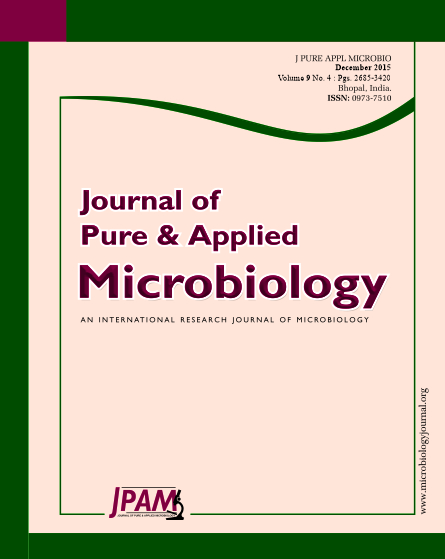Trichoderma spp. are biocontrol agents extensively used in management of fungal diseases of crop plants exhibiting mycoparasitism against a wide range of plant pathogens. Five Trichoderma spp. viz; T.aggressivum, T. citrinoviride, T. erinaceum, T. harzianum and T. koningiopsis, isolated from different locations of India were characterized for their antagonistic activity against Fusarium oxysporum f.sp. ciceri and Rhizoctonia bataticola causing wilt complex in chickpea. All the species revealed differential reaction pattern against all the test pathogens. However, T. koningiopsis was the only species which show high level of tolerance most effective in percentage inhibition of mycelial growth of test pathogen. Scanning Electron microscopic investigations about hyphal interactions between antagonists and test fungi revealed that the mycoparasitic hyphae were usually attached longitudinally to the hyphae of the pathogen. Coiling of hyphae, short contact branches, hyphal depression and pincer shaped structures were seen during observations through SEM indicated the mode of action in biological control of the test pathogen.
Fusarium oxysporum f.sp. ciceri. Rhizoctonia bataticola. Trichoderma spp., Antagonism, Hyphal relationship, Wilt Complex, Chickpea, Biological management.
© The Author(s) 2015. Open Access. This article is distributed under the terms of the Creative Commons Attribution 4.0 International License which permits unrestricted use, sharing, distribution, and reproduction in any medium, provided you give appropriate credit to the original author(s) and the source, provide a link to the Creative Commons license, and indicate if changes were made.


